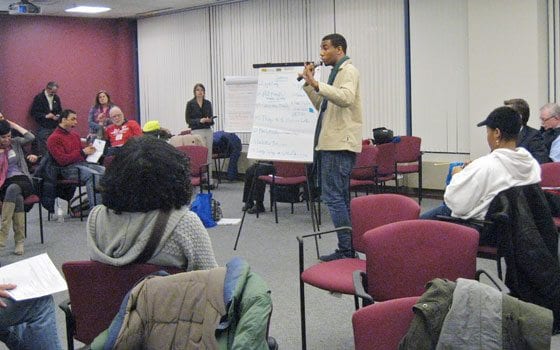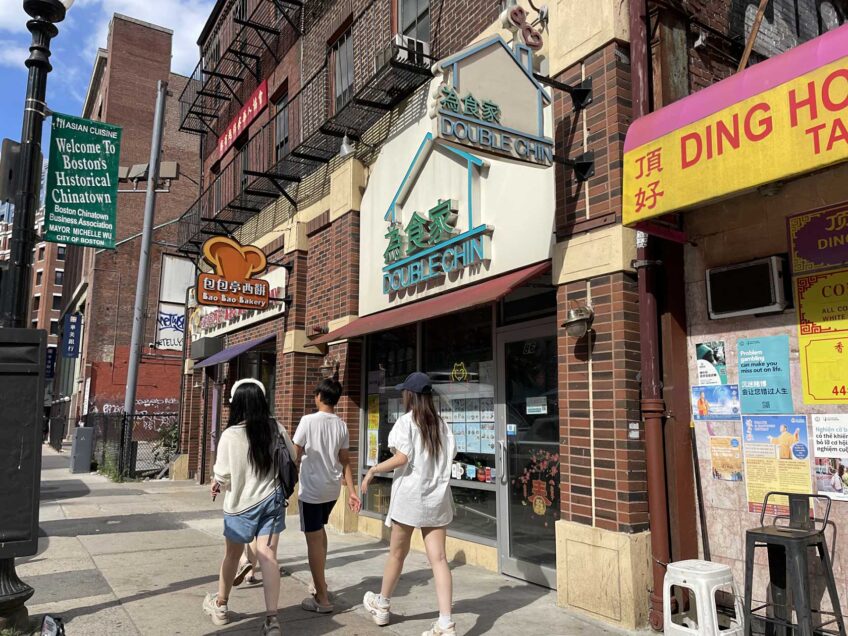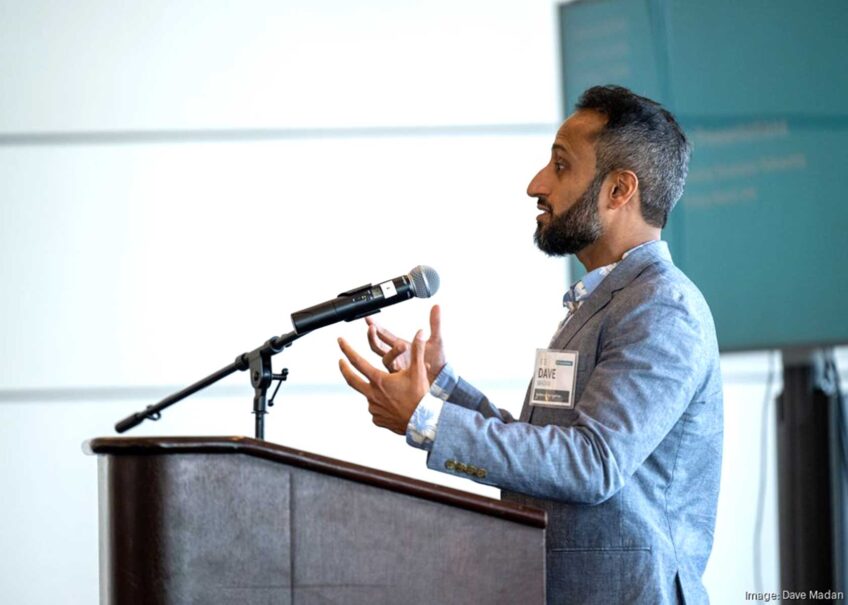
The Boston Transportation Department (BTD) held its second public meeting on the redesign of Melnea Cass Boulevard to create a more pedestrian- and bicycle-friendly street while still accommodating car, truck and public transit traffic.
The BTD is the lead agency among a group of city and state agencies involved in the improvement project, to be funded by $600,000 in City of Boston funds and $7.5 million in federal earmarks and state funding. A team of consultants with expertise in transportation engineering, bicycle planning and landscape architecture has been engaged to help with the planning.
The first meeting, held Oct. 11, broke down when elected officials and Roxbury community activists protested that the planners were ignoring a long history of planning and development work in the community.
The BTD and the outside consultants for the project learned from this mistake, said BTD Senior Transportation Planner Patrick Hoey.
“We’ve set the reset button tonight, and we’re going to get a fresh start,” Hoey said. “We did our homework. We’re going to put Melnea Cass Boulevard in its historical context this time.”
The Dec. 14 meeting proceeded with a slide show tracing the history of the area. Melnea Cass Boulevard is one of the after-effects of the massive demolition to make way for a planned highway connector through Boston in the 1960s. The highway plan was stopped in the early 1970s, largely because of intense citizen resistance — but the destruction was already wrought, leaving large swaths of vacant land where homes and businesses once stood.
Melnea Cass Boulevard was built in 1981 on one of the bulldozed paths. Running from Tremont Street near Ruggles Station to the Mass Turnpike Connector at Mass. Ave., today the boulevard is widely seen as a highway within the city, with fast-moving traffic and dangerous street crossings.
Now, the city wants to redesign the street with a new “complete streets” approach that emphasizes sustainability and a more pedestrian-centered approach.
After the slide presentation, attendees were divided into small groups — something that was on the agenda in the first meeting, but didn’t come to pass — to brainstorm on improvement ideas. In one group, led by Keri Pyke, director of transportation planning at Howard/Stein-Hudson Associates and the Melnea Cass project’s lead design consultant, attendees had a variety of suggestions.
“We’re going to have to change the lighting,” said one participant named Dan, pointing out how forbidding the area feels after dark for pedestrians.
“I appreciate bicycles,” said one woman, “but for women with children, bicycle paths are not a priority. I want convenient access to public transit and a well-lit walkway.”
State Rep. Byron Rushing, assigned to this group, said a dedicated lane for buses is needed, no matter what else comes into the design.
Group members agreed that traffic needs to be calmed with stoplights or prominent speed limit signs, and that crosswalks need to be improved or shortened.
Pyke asked what group members thought about adding on-street parking. This is a difficult issue, with some people feeling that businesses along the boulevard will depend on convenient parking, while others predicting problems with double-parking.
When the groups presented their findings at the end, public safety for pedestrians and an inviting, aesthetically beautiful design emerged as key goals.
At the meeting’s close, the design team gathered up the flip chart sheets full of ideas. The consultants clearly have their work cut out for them to create a cohesive design plan that melds the larger transit considerations with the public input. Discussions will continue after the holidays, with the next public meeting likely to be in late January or early February.
Rushing and State Rep. Gloria Fox, who were vocal about their discontent at the previous meeting, both said this meeting was far better.
“I think they did a good job of bringing everything together,” said Rushing. He only expressed disappointment that many of the people who were at the first meeting were not present to see the improvement.
Fox said that not only was the history left out of the previous meeting, but elected officials were not briefed beforehand. “[But] this time it was resolved, in a very positive way, and we felt connected with the process enough to make recommendations,” she said.
“This is historic,” she emphasized. “We’ve gone from the negative, to the positive, to the long-term planning. This is part of a long movement that’s continuing. We have to be community planners — but most community members don’t believe they are. Then they get into a meeting like this, and they realize they’re the only ones who can do it. Because they have to live with this.”






